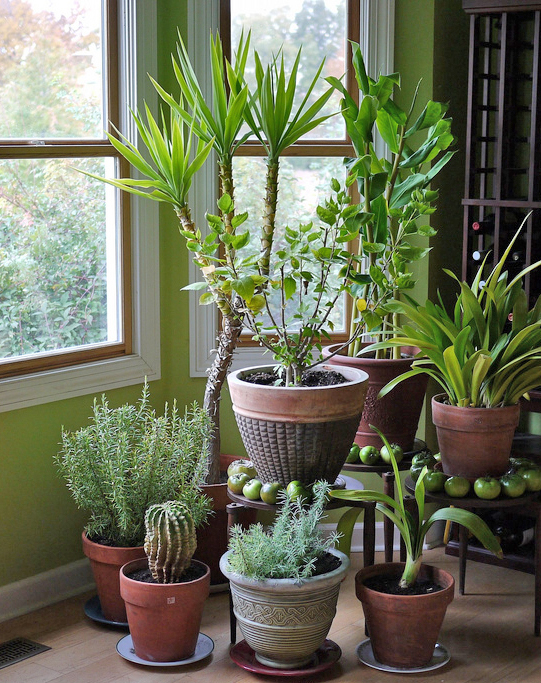You might look outside at San Diego’s weather and find this hard to believe, but it really is fall, and winter is right around the corner. You can feel it when you get up on these cool early mornings. Maybe you’re wearing socks along with your flip flops, our way of bundling up in Southern California. (Not a good look, but that is another column).
While you may not feel the change of seasons, your indoor plants do. They thrive in the spring and summer just like their outdoor counterparts. And just like your outdoor plants, they need some special care during the cooler months of the year, even if they aren’t so cool in San Diego.
In the winter, our already low humidity drops even lower inside when we start firing up our heaters. Dry air is a killer to your plants. Most are native to tropical climates, which makes it even worse.
If you want your favorite houseplants to stay healthy and stick around until sunny spring days return, follow these care tips from the pros here at Good Earth Plant Company.

When you reposition plants to get the most winter light, it also helps to be sure your windows are nice and clean. Photo: Flickr/FD Richards
- Add humidity to the air. You can mist your indoor plants once a day, but two or three times is even better. Tropical houseplants love a little humidity. Or you can position them during these winter months closer to sources of water, such as a kitchen or bathroom, or even an indoor water feature like a desktop fountain. If you run a bedroom humidifier, let your plants enjoy it too.
- Keep it clean. Wipe off any dust or grime on the leaves of your houseplants with a damp soft cloth. Dust and dirt can block a plant’s ability to “breathe” and absorb humidity.
- Don’t overwater. It may seem like we are contradicting our advice by telling you to increase humidity but not to water your plants as often in the winter. But your plants naturally slow down their growth in the fall and winter when there are fewer resources, so they want less water. You can often cut your watering schedule in half for tropical plants. Low-water use plants like succulents need even less water. Just don’t forget to start watering regularly again in the spring.
- No cold showers. You don’t like a cold shower in the winter and neither do your houseplants. When you water, use room temperature or slightly warmer water.
- Don’t fertilize. While you could try and force your plants to grow year round, let them follow the natural rhythm of the seasons. Withhold plant food and fertilizer until spring.
- Don’t repot or replant. For the same reasons, wait until spring to repot a favorite houseplant.
- Let there be light. The sun’s angle comes in lower during fall and winter, and our days are shorter. Your plants get a lot less light than they did in spring and summer. If you have houseplants that like bright light, move them to the brightest spot you can for the next few months. You can also rotate different sides toward the sun to help the whole plant absorb whatever light is available.
Although our seasonal changes in Southern California are mild, it is important to follow nature’s guidance. This is a rest period that will allow your plants to rejuvenate and come back even stronger in the spring. Human beings would be smart to learn this lesson too.
